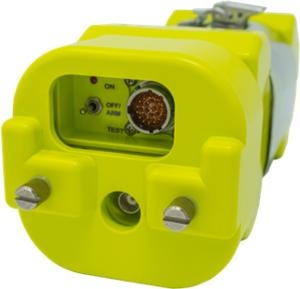Tue, Aug 28, 2018
Agency Recorded More Than 8,700 Such Alerts In 2017
The FAA has published in Information For Operators (InFO) focused on the issue of ELT false alerts. It also provides recommendations and additional information for the prevention of false alerts.

In 2017, ELTs generated 8,786 false alerts in the United States. The majority of 406 MHz ELT false alerts occur during testing and maintenance.
A false alert is a non-distress activation of a 406 MHz emergency beacon (either an ELT, Personal Locator Beacon [PLB], or Emergency Position-Indicating Radio Beacon [EPIRB] for maritime use). It can be caused by accidental activation during testing, mishandling, improper installation, or unfamiliarity with beacon operation. Search and Rescue (SAR) personnel respond immediately to every activation of a 406 MHz SAR Satellite-Aided Tracking (SARSAT) beacon. This response will stop only when it has been proven that the activation was a false alert. Because of this, every false alert has the potential to put rescuers in harm’s way and waste valuable resources. A method to help save time and resources for SAR personnel is to have a registered ELT.
The simplest and quickest way for SAR personnel to confirm a false alert is to place a phone call to the person to whom the ELT is registered. They do this using the information provided by the beacon owner in the National Oceanic and Atmospheric Administration (NOAA) SARSAT Beacon Registration Database system.
Aircraft operators and pilots should familiarize themselves with the information contained in this InFO. In addition, to help prevent false alerts, aircraft operators, and pilots should consider the following:
- Ensure that ELT self-tests and annual tests are conducted according to the manufacturer’s instructions.
- Register ELTs at www.beaconregistration.noaa.gov. Keep contact information up to date after registration.
- If the ELT is accidently activated, cancel the false alert by calling the U.S. Air Force Rescue Coordination Center at 1-800-851-3051 or the nearest Federal Aviation Administration Air Traffic facility and provide the beacon’s hex ID.
(Image from file)
More News
From 2023 (YouTube Version): Legacy of a Titan Robert (Bob) Anderson Hoover was a fighter pilot, test pilot, flight instructor, and air show superstar. More so, Bob Hoover was an i>[...]
Get The Latest in Aviation News NOW on Instagram Are you on Instagram yet? It's been around for a few years, quietly picking up traction mostly thanks to everybody's new obsession >[...]
Aero Linx: B-52H Stratofortress The B-52H Stratofortress is a long-range, heavy bomber that can perform a variety of missions. The bomber is capable of flying at high subsonic spee>[...]
Altimeter Setting The barometric pressure reading used to adjust a pressure altimeter for variations in existing atmospheric pressure or to the standard altimeter setting (29.92).>[...]
"Knowing that we play an active part in bettering people's lives is extremely rewarding. My team and I are very thankful for the opportunity to be here and to help in any way we ca>[...]
 Classic Aero-TV: Remembering Bob Hoover
Classic Aero-TV: Remembering Bob Hoover ANN FAQ: Follow Us On Instagram!
ANN FAQ: Follow Us On Instagram! ANN's Daily Aero-Linx (05.15.24)
ANN's Daily Aero-Linx (05.15.24) ANN's Daily Aero-Term (05.15.24):Altimeter Setting
ANN's Daily Aero-Term (05.15.24):Altimeter Setting Aero-News: Quote of the Day (05.16.24)
Aero-News: Quote of the Day (05.16.24)



